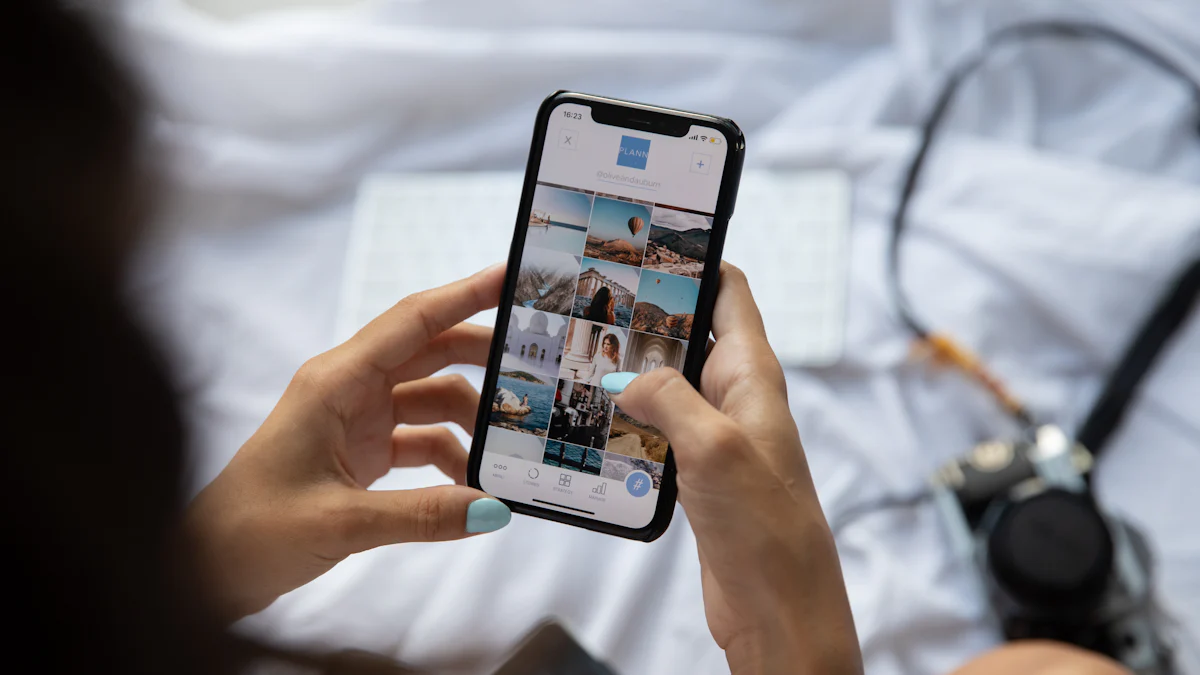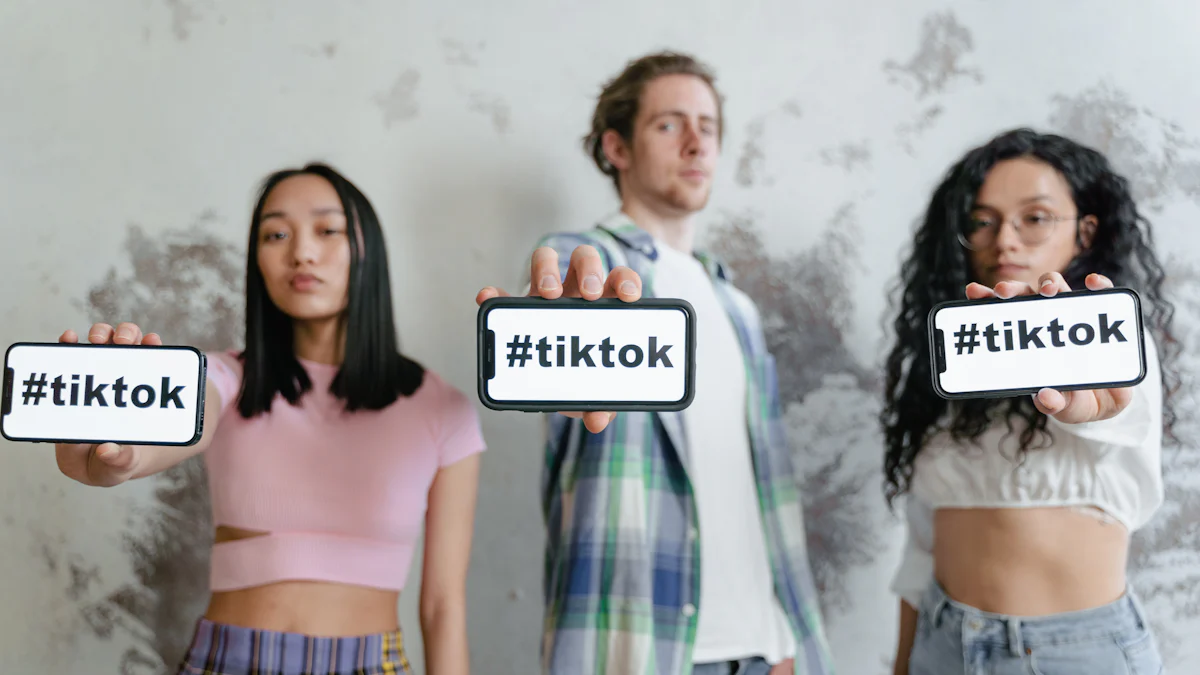The Pros and Cons of Using Influencer Marketing Platforms in 2025

In 2025, influencer marketing management platforms are more than just tools—they’re game-changers. With the market size expected to surpass $22 billion, these platforms are reshaping how brands connect with audiences. You’re not just reaching people; you’re targeting the right ones with precision. Did you know brands are projected to spend $9.29 billion on influencer campaigns this year? That’s a 14.2% jump from 2024!
But here’s the thing: understanding influencer marketing management isn’t optional anymore. These platforms help you find social media influencers, manage campaigns, and track performance. Plus, influencer marketing earns $5.78 for every dollar spent, sometimes even $18. If you want to maximize your ROI and stay ahead, you need to know both the perks and the pitfalls of using these tools.
Understanding Influencer Marketing Platforms
What Are Influencer Marketing Platforms?
Think of influencer marketing platforms as your all-in-one toolkit for managing influencer campaigns. These platforms simplify the process of finding, connecting with, and managing influencers. They’re designed to save you time and effort while boosting your campaign’s effectiveness. Whether you’re searching for influencers based on audience demographics or tracking campaign performance, these platforms have you covered.
At their core, they handle three primary functions:
- Influencer Discovery: You can search for influencers using filters like location, keywords, or audience interests.
- Campaign Management: These platforms streamline your workflow, from planning to execution.
- Relationship Management: They help you organize influencer contacts and maintain productive communication.
If you’re looking to scale your efforts, these tools are a must-have in today’s fast-paced digital marketing world.
The Role of Influencer Marketing Management
Managing influencer campaigns can feel overwhelming, especially when you’re juggling multiple tasks. That’s where influencer marketing management comes in. These platforms automate repetitive tasks like sending transactional emails or tracking promo codes. This frees you up to focus on building meaningful relationships with influencers.
You’ll also find that these tools act as a bridge between you and your influencers. They help you connect with the right people, manage communication, and even track sales through affiliate links. Plus, they provide advanced analytics to measure your ROI. With everything in one place, you can manage campaigns from start to finish without breaking a sweat.
Key Features and Capabilities
What makes these platforms so powerful? It’s their features. Here’s what you can expect:
- Influencer search: Quickly find influencers who align with your brand.
- Campaign management tools: Plan, execute, and monitor campaigns seamlessly.
- Performance tracking: Use advanced analytics to measure success and optimize strategies.
- Automation: Save time by automating manual processes like email outreach.
- Relationship management: Keep track of influencer collaborations with built-in CRM tools.
These capabilities make influencer marketing platforms indispensable for brands of all sizes. Whether you’re running a small campaign or managing a global strategy, these tools help you stay organized and efficient.
Benefits of Influencer Marketing Platforms

Enhanced Targeting and Audience Insights
When it comes to reaching your target audience, influencer marketing platforms give you a serious edge. These tools use advanced AI to analyze audience demographics, psychographics, and behaviors. What does that mean for you? You can segment your audience more effectively and craft messages that truly resonate.
Imagine knowing exactly what your audience wants before they even tell you. That’s the power of detailed audience insights. By tailoring your influencer strategy to match these insights, you’ll see a boost in audience engagement. Your campaigns won’t just reach people—they’ll connect with them on a deeper level.
Streamlined Influencer Marketing Management
Managing influencer marketing campaigns can feel like juggling too many balls at once. But with these platforms, you can simplify the process. They come equipped with CRM tools that help you organize influencer partnerships, track communication, and assess relationship performance. This level of organization is a game-changer for your influencer marketing strategy.
Platforms like Aspire take it a step further by combining creator discovery, campaign automation, and ROI tracking in one place. You can monitor performance, manage collaborations, and make data-driven decisions—all without breaking a sweat. By streamlining your workflow, you’ll have more time to focus on building meaningful influencer partnerships and refining your influencer strategy.
Scalability for Campaigns of All Sizes
Whether you’re running a small local campaign or a global influencer marketing strategy, these platforms have you covered. They offer tools to plan and execute campaigns efficiently, no matter the size. You can track influencer relationships and measure performance to make informed scaling decisions.
For larger campaigns, scalability becomes even more critical. These platforms help you manage multiple influencer partnerships without sacrificing quality. By keeping everything organized and measurable, you can grow your campaigns while maintaining a strong connection with your target audience.
The advantages of using influencer marketing platforms are clear—they make it easier to scale, manage, and optimize your influencer marketing campaigns.
Access to a Diverse Network of Influencers
One of the biggest advantages of using influencer marketing platforms is the access they provide to a wide variety of social media influencers. Whether you're looking for mega influencers with massive followings or nano influencers with tight-knit communities, these platforms have you covered. They allow you to connect with content creators who align with your brand's values and goals, making influencer collaborations more effective.
Here’s a quick breakdown of the types of influencers you can find on these platforms:
| Influencer Type | Follower Range | Characteristics | Ideal For |
|---|---|---|---|
| Mega Influencers | Over 1 million | Large, broad audiences; high exposure but lower engagement rates | Large corporations, luxury brands targeting broad audiences |
| Macro Influencers | 100,000 to 1 million | Established personalities; targeted approach with substantial reach | Startups, nonprofits, hotels, and airlines targeting specific large audiences |
| Micro Influencers | 10,000 to 100,000 | Highly engaged followers; affordable; strong presence on specific platforms | Brands wanting to reach niche, passionate audiences |
| Nano Influencers | 1,000 to 10,000 | Strong community connection; tailored content; personal relationships | Local businesses, small businesses, artisan products targeting specific communities |
This diversity means you can tailor your campaigns to fit your needs, whether you're increasing brand exposure or building trust with a specific audience. For example, if you're a small business, nano influencers can help you connect with local communities. On the other hand, mega influencers are perfect for boosting brand awareness on a global scale. These platforms make it easy to find the right fit for your strategy, ensuring your influencer endorsements feel authentic and impactful.
Data-Driven Campaign Optimization
Data is the backbone of any successful marketing strategy, and influencer marketing platforms excel at providing the tools you need to optimize your campaigns. These platforms go beyond basic metrics, offering insights that help you refine your approach and maximize results.
Here’s a look at some of the tools they provide:
| Tool Type | Description |
|---|---|
| Influencer discovery & search | Advanced search filters to identify reliable influencers and detect fake followers. |
| Influencer audience analytics | Analyze demographics and verify audience authenticity to target effectively. |
| Campaign performance tracking | Monitor real-time metrics and track conversions for ROI assessment. |
| Engagement & authenticity analysis | Compare engagement rates and perform sentiment analysis for audience insights. |
| Platform integration & automation | Integrate with social media platforms and automate influencer management tasks. |
| Reporting & insights | Create dashboards and export detailed performance reports for stakeholders. |
These tools let you track everything from engagement rates to conversions, giving you a clear picture of what's working and what isn't. For instance, audience analytics can help you verify that an influencer's followers match your target demographic. Meanwhile, performance tracking ensures you can measure ROI and adjust your strategy in real time. By leveraging these insights, you can fine-tune your campaigns to drive better results and strengthen your brand awareness.
With these platforms, you’re not just running campaigns—you’re making data-driven decisions that lead to smarter, more effective influencer collaborations. This level of precision ensures your efforts resonate with your audience and deliver measurable outcomes.
Challenges of Influencer Marketing Platforms

High Costs and Budget Constraints
Using influencer marketing platforms can be expensive, especially if you're working with macro or mega influencers. Costs vary depending on the platform and the influencer's reach. For example:
| Platform | Cost per post per 1,000 followers |
|---|---|
| $10 | |
| TikTok | $10 |
| $20 | |
| YouTube | $20 |
| X (Twitter) | $2 |
| Snapchat | $10 |
If you're targeting macro influencers, expect to pay anywhere from $5,000 to $25,000 per post, depending on the platform. These high costs can strain your budget, especially for smaller brands. However, there are ways to work around this. You can focus on micro or nano influencers, who often charge less but deliver higher engagement rates. You might also consider offering non-monetary incentives or repurposing influencer content to maximize its value. Starting small and scaling up as you learn what works can also help you manage costs effectively.
Limited Creative Control Over Content
When you collaborate with influencers, you give up some control over the content they create. This can be tricky. On one hand, you want the influencer's personal style to shine through. On the other, you need the content to align with your brand. Too much control can make posts feel robotic and inauthentic, which turns audiences off. Too little control, though, might result in off-brand messaging that confuses your audience.
Finding the right balance is key. You can provide clear guidelines while allowing influencers the freedom to add their unique touch. This approach helps maintain authenticity while reducing the risks of misaligned content. Remember, audiences trust influencers because of their genuine voice. Overstepping can harm both your campaign and the influencer's credibility.
Dependence on Platform Algorithms
Algorithms play a huge role in how your campaigns perform. Platforms like Instagram and TikTok constantly tweak their algorithms, which can impact your content's visibility. Even the best influencer collaborations might not reach your target audience if the algorithm decides otherwise. This dependence on algorithms is one of the major disadvantages of using these platforms.
To minimize potential risks, diversify your strategy. Work with influencers across multiple platforms to reduce reliance on a single algorithm. You can also focus on creating high-quality, engaging content that algorithms are more likely to favor. Staying updated on algorithm changes and adapting your strategy accordingly will help you navigate this challenge.
Measuring ROI and Campaign Effectiveness
Measuring ROI and campaign effectiveness is one of the trickiest parts of influencer marketing. You want to know if your investment is paying off, right? Thankfully, influencer marketing platforms offer tools to help you track performance and make informed decisions.
Here’s a quick look at the key metrics you should monitor:
| Metric | Description |
|---|---|
| Engagement Rate | Likes, comments, shares, and saves on influencer content |
| Reach and Impressions | Number of unique users who saw the content and total views |
| Click-through Rate (CTR) | Percentage of viewers who clicked on links in the influencer's content |
| Conversions | Sales, sign-ups, or other desired actions resulting from the campaign |
| Brand Sentiment | Changes in audience perception of the brand |
To measure ROI effectively, follow these steps:
- Track direct revenue. Use unique promo codes or affiliate links to see how much revenue your campaign generates. UTM parameters can also help you analyze performance.
- Monitor engagement metrics. Keep an eye on likes, comments, and shares. Check click-through rates to see how many people interact with your links.
- Analyze traffic data. Use tools like Google Analytics to track website traffic spikes and referral sources.
- Measure brand awareness. Look at impressions and follower growth during the campaign.
- Evaluate audience sentiment. Use social listening tools to track brand mentions and conduct surveys for feedback.
By focusing on these metrics, you’ll get a clear picture of what’s working and what needs improvement. This data-driven approach ensures your campaigns deliver measurable results.
Adapting to Rapidly Changing Trends
Social media trends change faster than ever. What’s popular today might be irrelevant tomorrow. As an influencer marketer, you need to stay ahead of these shifts.
For starters, the role of influencers has evolved. Followers now expect more than just product promotions. They want balanced, authentic reviews. Many creators won’t even work with brands unless the partnership feels genuine. This means you need to focus on building real connections with influencers who align with your values.
Content preferences are also shifting. People crave relatable, modest goals instead of flashy, over-the-top campaigns. Platforms like YouTube and podcasts are gaining traction because they offer deeper, more meaningful engagement. In fact, 42% of marketers plan to increase their investment in performance marketing by 2025. This shows a growing preference for strategies that deliver measurable outcomes.
AI is another game-changer. From content creation to audience analysis, AI tools can help you adapt quickly. But remember, trends aren’t just about technology. They’re about people. Keep an eye on what your audience values and adjust your strategy accordingly.
By staying flexible and proactive, you’ll keep your campaigns relevant and impactful, no matter how trends evolve.
Evaluating the Suitability of Influencer Marketing Platforms
Assessing Budget and Resource Availability
Before diving into influencer marketing platforms, you need to take a hard look at your budget and resources. These platforms can be pricey, especially when you factor in influencer payments, content creation, and software costs. Don’t forget about travel or event expenses if your campaign involves in-person collaborations. Overlooking these costs can lead to overspending, so it’s crucial to account for everything upfront.
When planning your budget, think about the type of influencers you want to work with. Mega influencers demand higher fees, while micro or nano influencers are more affordable and often deliver better engagement. Also, consider platform-specific fees and content creation costs. A realistic budget ensures you can allocate resources effectively and avoid stretching yourself too thin.
Aligning Platforms With Marketing Goals
To get the most out of influencer marketing platforms, align them with your specific goals. Start by defining what you want to achieve. Are you looking to boost brand awareness or drive sales? Clear objectives will guide your strategy and help you measure success.
Next, understand your audience. Analyze their demographics and interests to ensure the influencers you choose have followers who match your target market. Engagement matters more than reach, so prioritize influencers with loyal, active audiences. Authenticity is key too. Influencers whose values align with your brand will create content that feels genuine and resonates with their followers.
Here’s a quick breakdown to help you align platforms with your goals:
| Step | Description | Explanation |
|---|---|---|
| Define Your Campaign Goals | Set clear objectives like increasing sales. | Clear goals guide your strategy and help measure success. |
| Understand Your Audience | Analyze demographics and behaviors. | Ensures influencers’ followers align with your target audience. |
| Content Relevance and Authenticity | Match influencer content with your brand’s values. | Authentic content engages audiences and builds trust. |
| Engagement Over Reach | Focus on engagement rates over follower count. | Loyal audiences are more likely to take action. |
| Finding the Right Influencers | Monitor industry discussions and competitors. | Helps identify influencers who fit your brand. |
Considering Brand Size and Industry Niche
Your brand size and niche play a big role in determining the right platform and influencers for your campaigns. Larger brands often work with mega influencers to reach broad audiences. These influencers are ideal for large-scale campaigns that focus on brand awareness.
Smaller brands, on the other hand, might find more success with micro or nano influencers. These creators have smaller but highly engaged audiences, making them perfect for niche markets. They’re also more affordable, which is great if you’re working with a limited budget. For example, a local bakery might partner with a nano influencer to connect with the community, while a global tech company might choose a mega influencer to promote a new product.
By considering your brand’s size and niche, you can choose platforms and influencers that align with your goals and resources. This ensures your campaigns feel authentic and deliver the results you’re looking for.
Balancing Long-Term and Short-Term Campaign Needs
Balancing long-term and short-term campaign goals can feel like walking a tightrope. You want quick wins, but you also need to think about the bigger picture. So, how do you make it work? It starts with understanding what each approach brings to the table.
Long-term strategies help you build a strong brand voice and foster sustainable growth. They’re all about creating lasting relationships with your audience. On the other hand, short-term campaigns focus on immediate results, like boosting sales or engagement. Both are important, but the real magic happens when you combine them.
Here’s how you can strike that balance:
- Define your objectives clearly. What do you want to achieve? Short-term goals might include increasing website traffic or driving sales during a holiday season. Long-term goals could focus on building brand awareness or improving customer loyalty.
- Tailor your influencer campaigns to meet both needs. For example, you could work with a mega influencer for a short-term product launch while collaborating with micro influencers to build trust over time.
- Use metrics to measure success. Track short-term results like clicks and conversions, but don’t forget to monitor long-term indicators like audience growth and sentiment.
By aligning your campaigns with both short-term and long-term goals, you’ll maximize your impact. Think of it like planting a garden. Some seeds sprout quickly, giving you instant results. Others take time to grow but yield bigger rewards. When you nurture both, your marketing efforts flourish.
Balancing these needs isn’t just smart—it’s essential. It ensures your campaigns stay relevant today while setting you up for success tomorrow.
Influencer marketing platforms offer a mix of advantages and disadvantages that you need to weigh carefully. On the plus side, they simplify influencer discovery, streamline communication, and provide data-driven insights to scale your campaigns. However, challenges like high costs, limited creative control, and the fast-changing social media landscape can complicate your influencer marketing efforts.
To decide if these platforms are right for you, consider your budget, goals, and the type of influencers that align with your brand. Smaller brands might benefit from micro-influencers, while larger companies can explore mega-influencers for broader reach.
For 2025, focus on strategies that keep you ahead. Use AI to automate repetitive tasks and free up time for creative work. Explore emerging platforms like Bluesky to connect with niche audiences. And don’t just aim for awareness—leverage influencers to drive conversions and build lasting customer relationships. By staying adaptable, you’ll maximize the impact of your campaigns.
FAQ
What is the best way to find the right influencer for my brand?
Start by defining your target audience and campaign goals. Use influencer marketing platforms to filter creators by niche, audience demographics, and engagement rates. Look for someone whose values align with your brand. Authenticity matters more than follower count.
How can I measure the success of an influencer campaign?
Track metrics like engagement rates, conversions, and ROI. Use tools to monitor clicks, sales, and audience sentiment. Promo codes and affiliate links help measure direct results. Always compare performance against your campaign goals.
Are influencer marketing platforms suitable for small businesses?
Yes! Small businesses can benefit by working with micro or nano influencers. These creators are affordable and have highly engaged audiences. Platforms simplify the process, making it easier to manage campaigns and track results.
How do I handle creative control when working with influencers?
Provide clear guidelines but allow influencers to maintain their unique voice. Authenticity is key to connecting with their audience. Collaborate on ideas to ensure the content aligns with your brand while staying genuine.
What’s the biggest challenge with influencer marketing platforms?
Costs can be high, especially for larger campaigns. Budget carefully and consider working with smaller influencers to maximize engagement. Also, stay updated on platform algorithms to ensure your content reaches the right audience.
See Also
Evaluating The Benefits And Drawbacks Of Influencer Marketing
Essential Influencer Marketing Platforms To Explore In 2024
Advantages And Disadvantages Of TikTok Influencer Marketing
Key Influencer Marketing Trends To Monitor In 2024
Affordable Influencer Marketing Platforms To Consider In 2024
